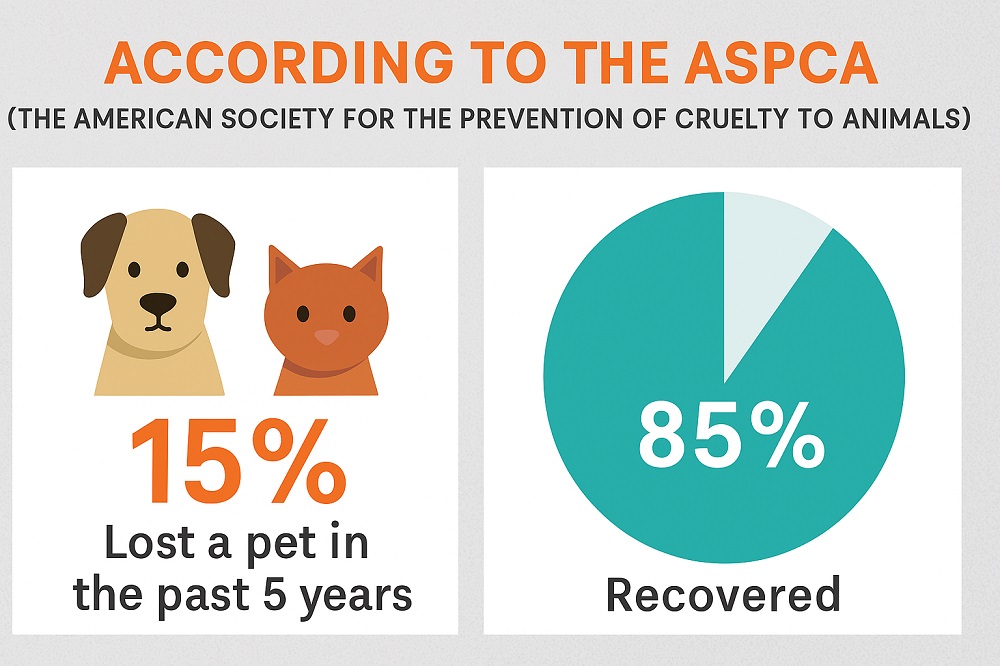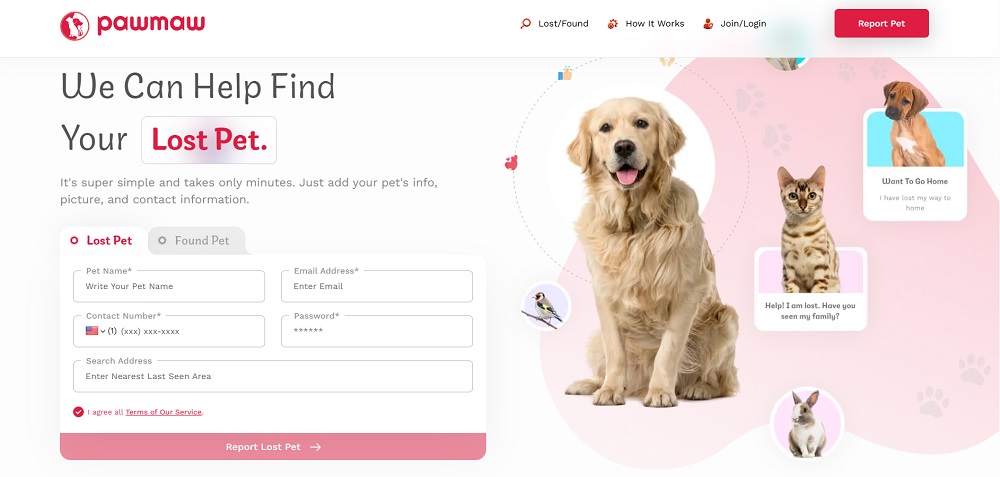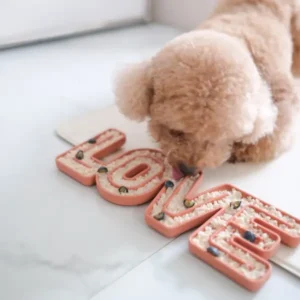
Beyond
How to Find Missing Dogs: Tips for a Safe and Quick Reunion
Dogs are known as man’s best friend, so you know that they are forever loyal companions and make great pets. But do you know what happens when they somehow go missing or get detached from their owners? It breaks their heart, as well as the owner’s.
According to the ASPCA (The American Society for the Prevention of Cruelty to Animals), 15 percent had lost a dog or a cat in the past five years, a lower number than had been reported; 85 percent of those lost dogs and cats were recovered.
We will explore in detail what you should do in case your furry friend goes missing and how you can get them back.

Step-by-Step Process to Find a Missing Dog
In case your dog goes missing, finding them can be both easy and complex at the same time. To make things predictable and easier for you, here is our step-by-step guide on how you can find a missing dog:
Step 1- Stay Calm and Act Fast
You might imagine that you might never see your dog again, or you might find one of them injured. But you can not afford to panic. Panicking in stressful situations will badly hamper your ability to think clearly and respond effectively. This is exactly why you need to stay as calm as you can.
If you let fear take over you, your judgment will become unclear, and it will be harder to take the right actions. Staying calm when your dog goes missing will help you remain focused. It will also allow you to analyze your surroundings more attentively and make smarter decisions.
- Your dog is highly sensitive to your emotions, so if they sense fear, shouting, or frantic movements from you, they may become even more frightened or scared and run away.
- Keep your voice steady and control your movements. By doing this, you create an environment that reassures your dog in case it has not gone far. This makes it more likely that they will approach you or remain calm themselves.
- Ultimately, composure benefits both you and your pet, giving you the best chance to find them nearby.
Step 2- Search Your Home and Immediate Area
For immediate search, begin with a thorough check of your home, looking in hidden spots and appliances, then expand to your backyard and immediate neighborhood. Tell neighbors and anyone you meet about your lost dog.
Give them a picture and a number to contact if they see your pet. But ask them not to chase the dog. A frightened dog may hide, so a gentle approach is best. You should search for your dog in your home and immediate surroundings in the following manner:
- Look for your dog in closets, under beds, and behind large furniture. A scared dog can usually hide in very small or odd places, like inside appliances or even under a porch.
- As you search, call your dog’s name and see if they respond. Also, put out your dog’s bed, a favorite toy, or an article of your unwashed clothing near the front door. The familiar scent can help guide them home.
- Let everyone in your neighborhood know about your dog and ask them to check their backyards, garages, and sheds for your dog. Ask them to contact you immediately and check at different times of the day.
Step 3- Expand the Search Radius
If your initial search is unsuccessful, your dog may have gone further than you initially thought. After checking your home and neighbourhood, gradually expand your physical search radius.
You may start your search in the area where the dog was last seen and move outwards to include neighboring towns and counties. You should also search areas where your dog might hide or be drawn to, such as quiet spots or their familiar routes.
- Your search should begin where your dog was last seen. Expand your search outward in a radius from your initial location.
- Use your car to expand your search area more quickly. You can also place a “LOST DOG” poster on your car window to make it a moving sign for people to notice it.
- You must check the popular dog-walking spots, parks, town centers, and busy store parking lots to see if you find your dog. You should also search quiet streets, fields, farms, abandoned buildings, and any sheltered or quiet locations where a dog might hide.
Step 4- Use Online Lost & Found Databases & Community Network
Now you can use online lost and found databases to find your missing dog because they are powerful resources for finding lost pets. Use social media by posting a detailed description and clear photo on local Facebook groups and apps like Nextdoor, Instagram, etc.
For a greater reach, you can also use PawMaw – Find Lost Dogs. By using this community network, you can create a listing, send an alert instantly, and reach more people in your local area and outside as well.

- Report a Pet – Tell them about your lost/found pet by posting a shout-out on their website. By that, you will get concerned people in your neighborhood right on the spot to help search for your pet.
- Promote – This network has a feature called PawMaw Alert. By activating the alert, you can make your search effort highly effective and reach thousands of people to the residents of the area where your pet went missing.
- How to Post – Write your pet name, enter your email address, contact number, password, and your dog’s last seen location. When you report a lost/found pet, your post will appear there as a featured post.
Step 5- Create and Distribute Effective Lost Dog Posters
You must create and distribute effective lost dog posters strategically in high-traffic areas within a several-mile radius of your dog’s escape point. This increases the chances of people seeing them and reporting a sighting, and increases the chances of your successful reunion with your dog.
You might also distribute flyers to your neighbors and local businesses. Ask your local animal shelters, veterinary offices, and animal control to keep a copy of your poster. You can use the following tactics to make it more efficient:
- You should use a large, bright, or fluorescent poster board to stand out. In that board, include a clear, close-up, color photograph of your dog and use a large, bold font for “LOST DOG”. This will make your board visible from a distance.
- Keep the text in the poster brief and easy to read. Include your dog’s name, breed, color, size, age, sex, personality traits, any distinguishing markings, or medical needs. Also include the date and location they were last seen. Write your phone number clearly, and make it effective by including tear-off strips at the bottom with your contact information.
- Distribute the posters all over your neighbourhood, high traffic areas, animal shelters, veterinary offices, and animal control. Also, offer a reward, but avoid stating a specific amount on the poster, as it may not be seen as worthwhile.
Step 6- Contact Shelters, Vets, and Animal Control
Contact all local animal shelters, veterinarians, animal control officers, and rescue organizations as fast as you can. This is for them to report the dog missing and check for any found animals.
Use a detailed description and photo of your dog and give them a copy if you can. Make sure you visit shelters in person every few days, as new arrivals may not be logged immediately. Here’s how you can make your contact process effective:
- You need to call all facilities within a 50-mile radius of where your dog went missing. Then, provide them with a detailed description of your dog, including any unique markings or behavior. Ask them about their found animal intake procedures and how often they update their lost pet records for assurance.
- It is important for you to notify nearby vet offices and emergency clinics. Because owners often call them to see if anyone has reported their lost pet. Also, ask them to stay alert, keep an eye out for your dog, and check if a dog was brought in by anyone.
- Contact your county or city animal control department. You should visit local shelters in person at least every few days, as the staff may not always be aware of new arrivals. You should also ask the animal control officer or shelter for a list of other facilities, like charity clinics or pounds, that might hold found stray dogs.
Step 7- Preventing Future Escapes
We all know that prevention is better than a cure. So you know, preventing your dog from getting lost is very much necessary for their safety as well as your peace of mind. To prevent your dog’s future escapes, maintain fences and gates, and always use a leash when outside your yard.
Your dog should have a collar with ID tags and be microchipped. You need to address any underlying training or anxiety issues. Here’s what you can do to prevent your dog from getting lost in the future:
- Check if there are any loose boards, gaps, or holes that your dog might go through or dig under. If your dog is a digger, place rocks or a barrier at the bottom of your fence. You must keep gates closed and latched properly to prevent any accidental escapes.
- Make sure your dog’s collar always has a tag with your current contact information. Use a microchip, as it is a permanent form of identification that can greatly increase your chances of a successful reunion with your dog.
- If your dog is bored or anxious, it can and will try to escape. For this, make sure your dog gets enough exercise and mental stimulation to stay happy at home. You might want to consult with a trainer or vet to find solutions to separation anxiety or other behavioral issues, if there are any.
Conclusion
We can understand that looking for your “Missing Dog” can be an overwhelming experience for you. But you can not afford to get too emotional. All you need is to stay strong and patient, a strategy, and determination to increase your chances of a safe reunion with your dog. From letting everyone know in your community to checking shelters, using social media, and staying calm, every step will play a role in bringing your furry friend back home to you.
Are you looking for your lost pet? We can reunite you with your furry friend in no time using our unique methods. Need more help finding your missing pets? You know who to reach out to.








Comments